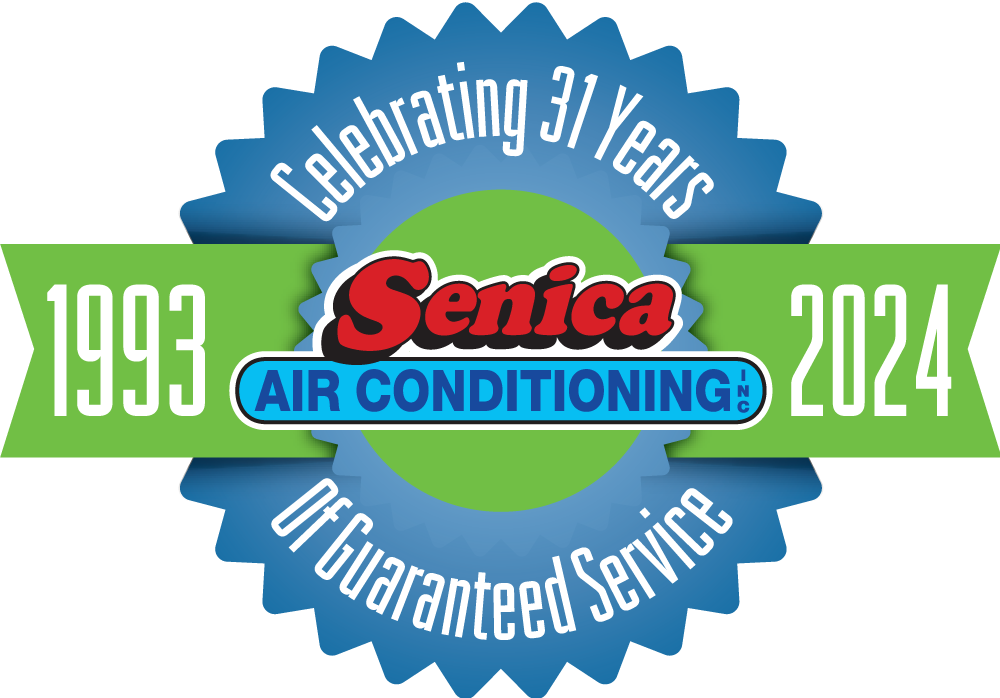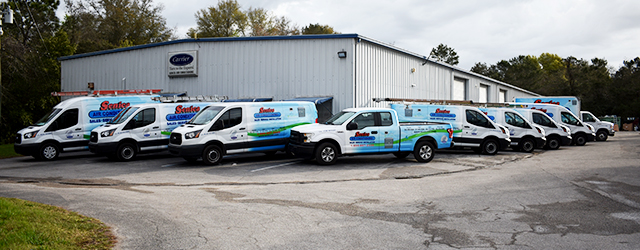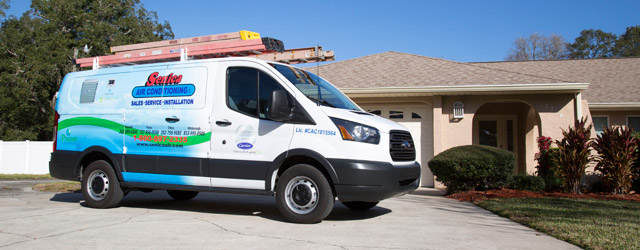Senica Air Conditioning Crystal River Fl

Living in Crystal River, Florida, we all rely on our air conditioning to keep us comfortable, especially during those long, hot summer months. A common frustration homeowners face is an AC unit that's blowing warm air, or no air at all. Before you panic, there are a few things you can check yourself. This guide will walk you through some simple troubleshooting steps.
Troubleshooting Your Senica Air Conditioning Unit: Warm Air Woes
We'll focus on the scenario where your Senica AC unit is running, but blowing warm or no air. This could indicate several problems, ranging from simple fixes to issues requiring professional attention.
Step 1: Check the Thermostat
This might seem obvious, but it's the most common culprit. Make sure your thermostat is:
- Set to "Cool" mode. Accidental switching to "Heat" or "Off" happens more often than you think!
- Set to a temperature lower than the current room temperature. If it's set to 78°F and your house is 80°F, it won't turn on.
- The batteries are good (if it's a battery-powered thermostat). A weak battery can cause erratic behavior. Try replacing them.
DIY Fix: Adjust the thermostat settings and/or replace the batteries. Wait a few minutes to see if the AC kicks on. If it does, problem solved!
When to Call a Pro: If the thermostat seems to be functioning correctly (displaying the correct temperature, responding to changes), but the AC still isn't cooling, move on to the next step.
Step 2: Inspect the Air Filter
A dirty air filter restricts airflow, causing the AC unit to work harder and less efficiently. This can lead to the system overheating and blowing warm air or shutting down completely.
Location: Typically, the air filter is located inside the indoor unit (air handler), either in a slot on the unit itself or behind a return air grille on the wall or ceiling.
Check the Filter: Remove the filter and hold it up to the light. If you can't see light through it easily, it's dirty.
DIY Fix: Replace the dirty air filter with a new one of the correct size. This is a maintenance task you should perform every 1-3 months, depending on usage and air quality. Always note the size and type of filter your unit requires before heading to the store. The size will be printed on the side of the existing filter. Consider purchasing several filters at once to have on hand.
When to Call a Pro: If replacing the filter doesn't solve the problem, or if you notice excessive dust buildup around the air handler, there may be a deeper issue with your ductwork that requires professional cleaning or sealing.
Step 3: Examine the Outdoor Unit (Condenser)
The outdoor unit is responsible for releasing heat from your home. If it's blocked or malfunctioning, it can't do its job properly.
Safety First! Before inspecting the outdoor unit, turn off the power to the AC unit at the breaker box. This prevents accidental electrical shock. The breaker will typically be labeled “AC,” “Air Conditioner,” or “Condenser.”
Check for Obstructions: Ensure the area around the outdoor unit is clear of debris, such as leaves, branches, grass clippings, and overgrown vegetation. Maintain at least 2-3 feet of clearance around the unit for proper airflow.
Inspect the Fins: The condenser fins (the thin metal plates surrounding the unit) can become bent or damaged, restricting airflow. Gently straighten any bent fins using a fin comb (available at most hardware stores). Be careful not to damage them further.
Clean the Unit: Using a garden hose (with a gentle spray nozzle), rinse the condenser fins from the inside out to remove any accumulated dirt and debris. Avoid using a high-pressure washer, as this can damage the fins.
DIY Fix: Clear obstructions, straighten bent fins, and clean the condenser unit. After cleaning, turn the power back on at the breaker and wait 30 minutes to see if the AC starts cooling.
When to Call a Pro: If the fan on the outdoor unit isn't running, if you hear unusual noises coming from the unit, or if the unit is covered in ice (even after cleaning), it's time to call a professional technician.
Step 4: Check the Circuit Breaker
A tripped circuit breaker can cut power to the AC unit, preventing it from running. Even if the fan is running, the compressor might not be, which is essential for cooling.
Location: The circuit breaker is located in your home's electrical panel.
Inspection: Look for a breaker that is switched to the "off" position or is in a "tripped" position (usually in the middle).
DIY Fix: Reset the breaker by switching it fully to the "off" position and then back to the "on" position.
Important Note: If the breaker trips immediately after you reset it, there's a more serious electrical problem. Do not repeatedly reset the breaker.
When to Call a Pro: If the breaker trips repeatedly, or if you are unsure how to safely reset a breaker, contact a qualified electrician or an HVAC technician. A repeatedly tripping breaker could indicate a short circuit or other electrical fault.
Step 5: Check the Condensate Drain Line
Your AC unit produces condensation, which is drained away through a condensate drain line. If this line becomes clogged, it can cause the AC unit to shut down or leak water.
Location: The condensate drain line is usually a PVC pipe located near the indoor unit (air handler). It may drain outside or into a floor drain.
Check for Clogs: Look for any signs of blockage, such as water backing up in the drain pan or visible debris in the drain line.
DIY Fix:
- Pour a cup of distilled white vinegar into the drain line. This can help dissolve minor clogs. Wait about 30 minutes, then flush with water.
- Use a wet/dry vacuum to suck out any debris from the drain line. Attach the vacuum hose to the end of the drain line and create a tight seal. Turn on the vacuum for a few minutes to remove any clogs.
- Clear the drain line with a stiff wire or pipe cleaner. Gently insert the wire into the drain line to break up any clogs.
When to Call a Pro: If you can't clear the clog yourself, or if the drain line is severely damaged, it's best to call a professional HVAC technician. They have specialized tools to clear stubborn clogs and repair or replace damaged drain lines.
When to Call Senica Air Conditioning in Crystal River, FL
While the above steps can resolve many common AC problems, there are situations where professional help is essential. Call Senica Air Conditioning immediately if you observe any of the following:
- Refrigerant leaks: You may notice a sweet, oily smell near the unit, or ice forming on the refrigerant lines. Refrigerant is a hazardous substance and should only be handled by a licensed technician.
- Electrical issues: Repeatedly tripping breakers, burning smells, or exposed wires are all signs of serious electrical problems.
- Compressor problems: The compressor is the heart of the AC unit. If it's failing, you'll likely hear loud noises or the unit won't cool at all. Compressor repairs are complex and require specialized equipment.
- Frozen evaporator coil: A frozen evaporator coil (located inside the air handler) can be caused by low refrigerant, a clogged air filter, or a faulty blower motor.
- You've tried the DIY fixes and your AC still isn't cooling. Sometimes, the problem is more complex than it appears, and professional diagnosis is necessary.
Preventative Maintenance: The best way to avoid AC problems is to schedule regular preventative maintenance with Senica Air Conditioning. A professional technician can inspect your unit, clean the coils, check the refrigerant levels, and identify potential problems before they become major issues. Regular maintenance can extend the life of your AC unit and save you money on energy bills.
Remember: Your safety is paramount. If you're uncomfortable performing any of these troubleshooting steps, or if you suspect a serious problem, don't hesitate to call Senica Air Conditioning. We're here to help keep you cool and comfortable in Crystal River, Florida!










